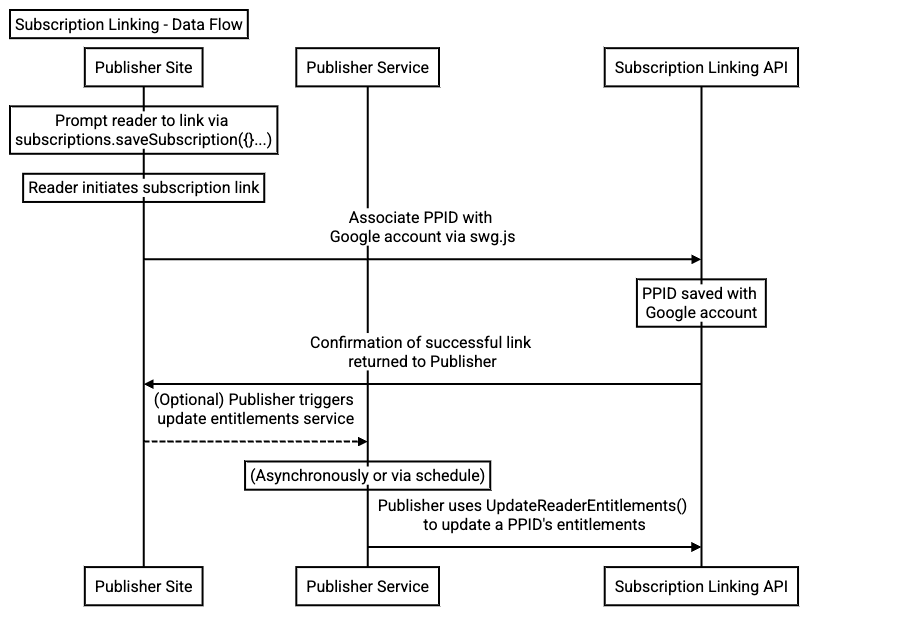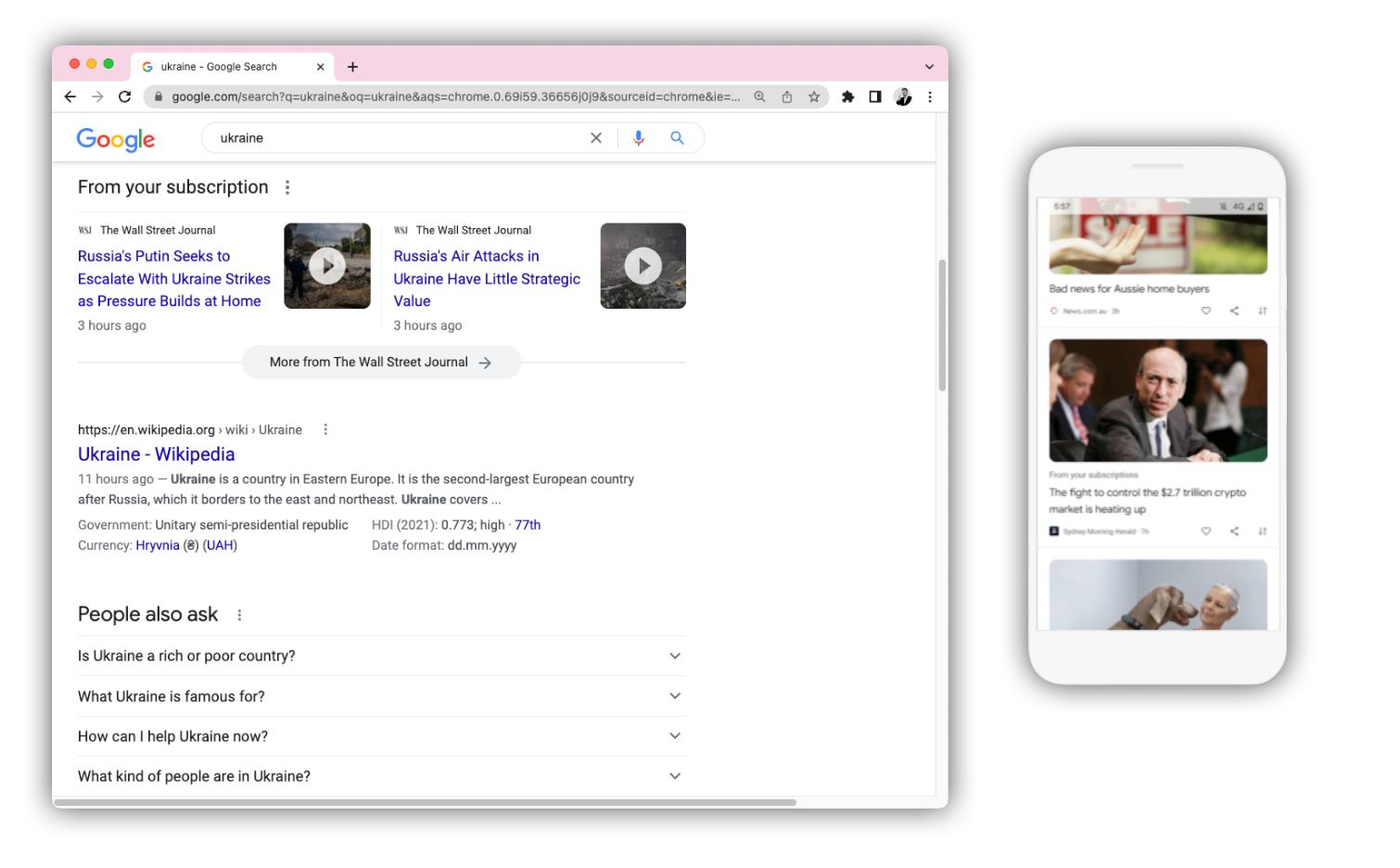
Figuur 1. Sequentiediagram voor de hoogwaardige gegevensstroom van het Subscription Linking-proces.
Om abonnementskoppeling te implementeren, moet de site van een uitgever client-side JavaScript gebruiken om de koppeling voor lezers te initiëren en een server-side service om de rechten van lezers te beheren. Beide systemen gebruiken informatie van de gehoste webpagina, de configuratie van het Uitgeverscentrum van uw publicatie en accountgegevens van de Google Cloud-service.
Door een abonnement te koppelen
- Een lezer met een betalend abonnement of recht op een bijdrage komt naar uw website.
- In uw client-side code wordt
swg.jsgebruikt om de lezer de mogelijkheid te bieden om zijn/haar account te koppelen aan zijn/haar Google-account. Zo kan de lezer profiteren van de voordelen van de koppeling via een knop of call-to-action die u ontwerpt en op uw website plaatst. - Nadat de call-to-action is geactiveerd (hetzij expliciet door een klik, hetzij impliciet als gevolg van een andere actie of status), logt de lezer in op zijn/haar Google-account (of selecteert een van de actieve accounts) en geeft de uitgever toestemming om lezersinformatie te koppelen aan zijn/haar Google-account. De uitgever maakt een door de uitgever verstrekte identificatie (PPID) voor de lezer aan als onderdeel van de aanvraag. Deze wordt opgeslagen in het Google-account van de lezer en gebruikt voor latere API-interacties.
- Nadat toestemming is verleend, wordt de lezer teruggestuurd naar de site van de uitgever. De uitgever kan Google nu laten weten welke rechten de lezer heeft.
- (Asynchroon) Uitgevers sturen Google informatie voor elke lezer die zijn account succesvol heeft gekoppeld, waarbij hun PPID's worden gebruikt om Google's registratie van de PPID-rechten bij te werken. Google's registratie van de PPID-rechten moet actueel blijven, aangezien deze registraties worden verwijderd wanneer ze verouderd zijn. Een registratie is 30 dagen na de vervaldatum verouderd en wordt vervolgens verwijderd.
Voordelen
Wanneer een lezer de website van een uitgever bezoekt die abonnementskoppeling heeft geïntegreerd en een abonnement of bijdrage op deze website heeft betaald, kan hij of zij zijn of haar uitgeversaccount koppelen aan zijn of haar Google-account. Deze lezers komen dan in aanmerking voor meer zichtbaarheid van de content van deze publicatie in Google-producten, zoals Zoeken en Discover. Dit stelt lezers in staat om hun gebruik van de content van de betaalde publicaties te maximaliseren. Lezers kunnen hun uitgeversaccount op elk moment of via een door de uitgever opgegeven actie ontkoppelen van hun Google-account.
Samenvatting van de voordelen voor lezers
- Lezers zoeken naar inhoud, nieuws of niet-nieuws, en zien de lijst 'Van uw abonnementen'.
- Lezers communiceren met Discover (op het startscherm van hun Android-apparaat, of op iOS in de Google-app, Chrome of via een widget op het startscherm) en zien 'Van je abonnementen' als een sectie binnen Discover.

Figuur 2. Schermafbeelding van de module 'Van uw abonnementen' op een pagina met zoekresultaten op desktop en mobiel.
Uitgever profiteert van een gekoppeld abonnement
- Efficiëntere, op langere termijn veerkrachtige server-side setup voor accountbeheer
- Vereist geen aanmaak van een openbaar OAuth IDP en rechten-eindpunt, zoals bij eerdere versies van Account Linking wel het geval was
- Verbeterde betrokkenheid en retentie van gebruikers doordat de inhoud van de publicatie duidelijker werd weergegeven in de zoekresultaten van Google.
